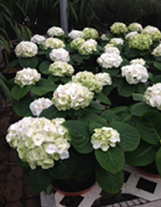 Hello again fellow gardeners. Here are some updates and things you may want to consider doing, if you have not already done so.
Hello again fellow gardeners. Here are some updates and things you may want to consider doing, if you have not already done so.
Apply Gypsum and Lime: A perfect product to apply to hardpan soils, particularly after the Aeration process. Gypsum, applied over 3 or more seasons can have a great effect on the soil percolation, or the soil’s ability to drain. Gypsum comes usually in a 40 lb. bag that can be applied through a spinner spreader, and sometimes a drop spreader. Make sure you follow the instructions for the correct application rates, as applying too little does not benefit you. Lime applied at the proper rates now, will break down over the course of the Winter, to yield a good pH, and prep your lawn for Spring.
Winter-seeding or Fall Seeding is still an activity worthwhile this time of year. It allows us to use up what we have in surplus seed from this season, and bolster the thinner areas of the lawn, and damaged areas. You can save on materials such as peat moss, or seed starting products, by leaving fallen leaves on the newly seeded bare areas. Those leaves help germination by maintaining moisture, and keeping the seed from becoming bird food.
SHRUBS AND TREES:
Shrubs: I like to trim back any shrubs that I can before winter, particularly after these last 2 years of early snowstorms. As I probably do not need to mention, those storms created far too much damage to our beloved landscape and garden habitats. The old rule of 30 percent still applies to how much should be removed from the plant. Check with your local garden shop as to how to insulate, and protect from winter damage, such as burlap fences, and anti-desiccant sprays.
Perennials: My most asked question so far this season from my customers and friends is: “when will my Hydrangeas boom?” Cut them properly, and at the right time. Most people, and many landscapers do not realize that Hydrangea is a woody perennial, and not considered a shrub.
 For “Smooth” Hydrangeas, (e.g.-“Annabelle”, or what some people call snowball), I like to cut these down to an even mound at the end of the season, no taller than 24”, for an average 3 year old plant. These bloom on “new wood”, and have a more woody base growth.
For “Smooth” Hydrangeas, (e.g.-“Annabelle”, or what some people call snowball), I like to cut these down to an even mound at the end of the season, no taller than 24”, for an average 3 year old plant. These bloom on “new wood”, and have a more woody base growth.
Macrophylla, Varieties, (“Nikko Blue”, and many ever-blooming types), should be cut back as soon as they bloom, leaving most of the wood on the plant over the winter; they bloom on “old wood”. I cut them back 2-3 whorls, depending on the existing size and height Macrophylla photo, right.
This is also a good time to control Ivy, Wisteria, and other invasive vines that invade growing, and habitat areas. Take a slow pass through your perennial and annual beds with sharp shears and, do a nice cleaning of the plant debris. Don’t forget that your Roses should be cut back to 18” height, with possible exception of some of your smaller shrub Rose varieties. Clear all leaf debris away to prevent disease for the upcoming season.
This can also be a good time to divide, and transplant your perennials and grasses, and sedges, as we have no heat stress until next year, and your roots will always grow over the winter. Also, doing so can spark some design ideas for the upcoming growing season. Once you have done this, you should find some clearance material on sale now, at your local garden shop that may work for your plan.
Trees: Trees are perhaps the most important topic of this article. By removing dead limbs, and low overhanging limbs from driveways, walkways, house gutters, you are helping yourself to a safer start to the season.
 I am finding that I still need to remind customers and friends to get consultations from a Certified Arborist as to how to do preventative maintenance, to avoid winter calamity this year, and future years. Tree care is often overlooked until something strikes the house or car; then of course, it is too late. Many responsible Arborists give free consultations, and are more interested in saving trees, as opposed to cutting them down.
I am finding that I still need to remind customers and friends to get consultations from a Certified Arborist as to how to do preventative maintenance, to avoid winter calamity this year, and future years. Tree care is often overlooked until something strikes the house or car; then of course, it is too late. Many responsible Arborists give free consultations, and are more interested in saving trees, as opposed to cutting them down.
Have a great Holiday Season!
Written By: Everett Fink
 Everett Fink is a Certified Rutgers Master Gardener, Certified Pesticide applicator, and N.J. State licensed Home Improvement Contractor. Everett was designated Top Tier Designer at Sponzilli Landscape, and currently Owns Property Details LLC, in New Jersey.
Everett Fink is a Certified Rutgers Master Gardener, Certified Pesticide applicator, and N.J. State licensed Home Improvement Contractor. Everett was designated Top Tier Designer at Sponzilli Landscape, and currently Owns Property Details LLC, in New Jersey.



































